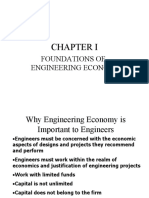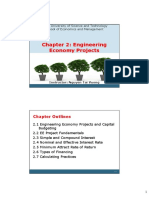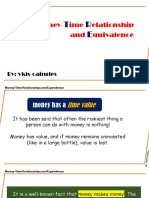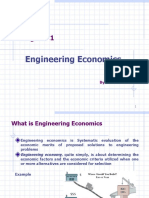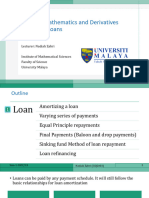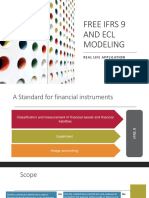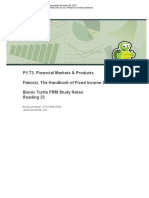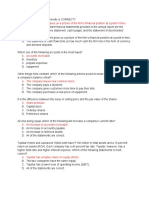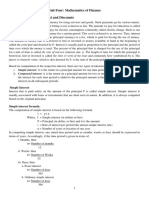0% found this document useful (0 votes)
22 views36 pagesChapter 1
GENG 360 Engineering Economics is a course taught by Dr. Tarek El Mekkawy that focuses on fundamental concepts of engineering economics, including methods for evaluating financial alternatives and practical applications using real data. The course covers various topics such as time value of money, interest rates, cash flow estimation, and benefit-cost analysis, with evaluations based on homework, quizzes, a midterm, and a final exam. The required textbook is 'Engineering Economy' by Leland Blank and Anthony Tarquin, 8th Edition.
Uploaded by
aisharagabalijwarCopyright
© © All Rights Reserved
We take content rights seriously. If you suspect this is your content, claim it here.
Available Formats
Download as PDF, TXT or read online on Scribd
0% found this document useful (0 votes)
22 views36 pagesChapter 1
GENG 360 Engineering Economics is a course taught by Dr. Tarek El Mekkawy that focuses on fundamental concepts of engineering economics, including methods for evaluating financial alternatives and practical applications using real data. The course covers various topics such as time value of money, interest rates, cash flow estimation, and benefit-cost analysis, with evaluations based on homework, quizzes, a midterm, and a final exam. The required textbook is 'Engineering Economy' by Leland Blank and Anthony Tarquin, 8th Edition.
Uploaded by
aisharagabalijwarCopyright
© © All Rights Reserved
We take content rights seriously. If you suspect this is your content, claim it here.
Available Formats
Download as PDF, TXT or read online on Scribd
/ 36


